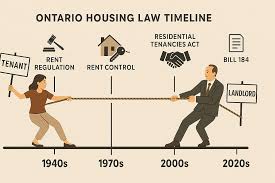In cities like Toronto and Vancouver, where space is scarce and housing costs continue to climb, a new type of rental is on the rise: micro-units. Also called “nano-suites” or “tiny rentals,” these compact apartments are designed to maximize every square foot while offering affordability and central location as their main attractions. For renters feeling squeezed out of traditional one-bedroom apartments, micro-units represent both a challenge and an opportunity.
What Exactly Are Micro-Units?
Micro-units are typically self-contained apartments ranging from 200 to 350 square feet. They come equipped with essentials like a kitchenette, a compact bathroom, and often multipurpose living areas where a bed might fold into the wall or double as a sofa. Many developments also compensate for small private space by offering shared amenities—rooftop patios, gyms, study lounges, or co-working spaces.
Why Are They Becoming Popular?
There are a few factors driving demand:
- Rising Rent Costs: Both Toronto and Vancouver consistently rank among the most expensive rental markets in Canada. For many, a micro-unit is the only way to live downtown without spending over half their income on rent.
- Urban Living Priorities: Younger professionals, students, and digital nomads often prioritize location and lifestyle over square footage. Proximity to work, transit, nightlife, and cultural hubs outweighs the desire for more living space.
- Changing Lifestyles: Many renters are embracing minimalist living. With streaming services replacing DVDs, digital books replacing shelves, and shared spaces supplementing private ones, people need less “stuff” than ever before.
The Appeal of Tiny Rentals
- Affordability: Though still not cheap by international standards, micro-units are usually priced below average studio or one-bedroom rentals.
- Location: These units often appear in highly desirable urban centers, steps away from transit and amenities.
- Sustainability: Smaller spaces use less energy, aligning with eco-friendly values and the push for greener cities.
The Drawbacks to Consider
Despite their benefits, micro-units aren’t for everyone.
- Space Constraints: At under 300 square feet, storage is limited. Renters need to be strategic about belongings.
- Privacy & Noise: With common amenities and dense layouts, noise and a lack of solitude can be issues.
- Price per Square Foot: Ironically, while cheaper overall, the rent per square foot in micro-units is often higher than larger apartments.
Are Micro-Units the Future of Canadian Rentals?
Developers and city planners see micro-units as part of the solution to Canada’s housing affordability crisis. By fitting more units into limited urban space, cities can house more people close to jobs and transit. However, critics argue that they represent a “band-aid solution,” addressing affordability on paper without tackling root causes like zoning, supply bottlenecks, or investor-driven pricing.
That said, micro-units fill a gap for specific demographics—students, young professionals, and those seeking temporary housing—who are willing to trade space for location and price. For many, these apartments serve as stepping stones, not permanent homes.
Final Thoughts
As Toronto and Vancouver continue to grapple with high rents and limited housing supply, micro-units will likely become more common. They may not suit families or long-term renters, but for individuals looking to live affordably in Canada’s most dynamic cities, tiny rentals could be the key to unlocking big opportunities.
Search
Categories
Recent posts
Tags
- a louer
- affordable apartments Toronto
- affordable housing
- affordable housing solutions Canada
- Air Filters
- air quality
- apartment
- apartment close to public transport
- apartment for rent
- apartment for rent montreal
- apartment for rent Toronto
- apartment insurance
- appartement
- appliances
- ARTICLE
- available for rent
- background check
- bacteria
- best city to live in canada
- best healthcare
- bicycle
- bicycle path
- bike lane
- bike path
- bikes
- bill 16
- burglar
- buy a house
- buying a house
- carbon monoxide detector
- cars
- centris
- city
- cleaning
- cleaning products
- cleaning wood floors
- closet
- closet space
- clothing organizer
- compact rental units
- condo
- condo association laws
- condo fees
- condo for rent
- condo insurance
- construction budget
- construction contractors
- construction cost
- credit check
- decorating room
- digital transaction
- door lock
- doors
- downtown micro apartments
- electricity
- employment verification
- energy consumption
- energy cost
- energy saving
- engineered hardwood
- fire alarm
- fire detector
- fire extinguisher
- floor
- flooring
- for rent
- For rent in Montreal
- For rent in Toronto
- For rent in Vancouver
- for sale
- furniture
- gas
- healthy candles
- healthy lifestyle
- home
- house
- house for rent
- house for sale
- house garden
- house insurance
- house locks
- house plants
- immigrant
- importance of water leak detector
- indoor plants
- insurance
- intergenerational home
- intergenerational living
- interior designer
- investment
- landlord
- lease
- lease responsibility
- long term care facility
- low crime
- mattress
- micro-apartments Vancouver
- micro-units Toronto
- mls
- move to canada
- moving company
- Moving to canada
- moving truck
- multigenerational home
- multiplex
- nano-suites
- nano-suites Toronto
- new apartment
- new color
- oil
- old age home
- online house purchase
- Ontario
- paint colors
- passive income
- pet friendly apartment
- pet friendly plants
- planning for vacation
- plants
- porcelain tile
- property
- questions for apartment rental
- real estate
- real estate agent
- real estate broker
- real estate online
- real estate transaction
- realtor
- renal history
- rent
- rent an apartment
- rent control
- rent obligations
- rental
- rental board
- rental scam
- renting
- residential income
- residential lease
- residential rental
- revenue property
- safe area
- safe candle in apartment
- safe candle in house
- safe candles
- safety
- scam
- security
- sell a house
- seniors residence
- small apartments Vancouver
- smoke detector
- social media and real estate
- soy candle
- soy candles made with essential oils
- storage space
- student apartment
- student housing
- tenant
- tiny rentals Canada
- traffic
- trending color
- trending paint
- university student rental
- ventilation
- vinyl floor
- water alarm
- water damage
- water leak detector
- window frame
- window manufacturer
- windows
- wood floors



